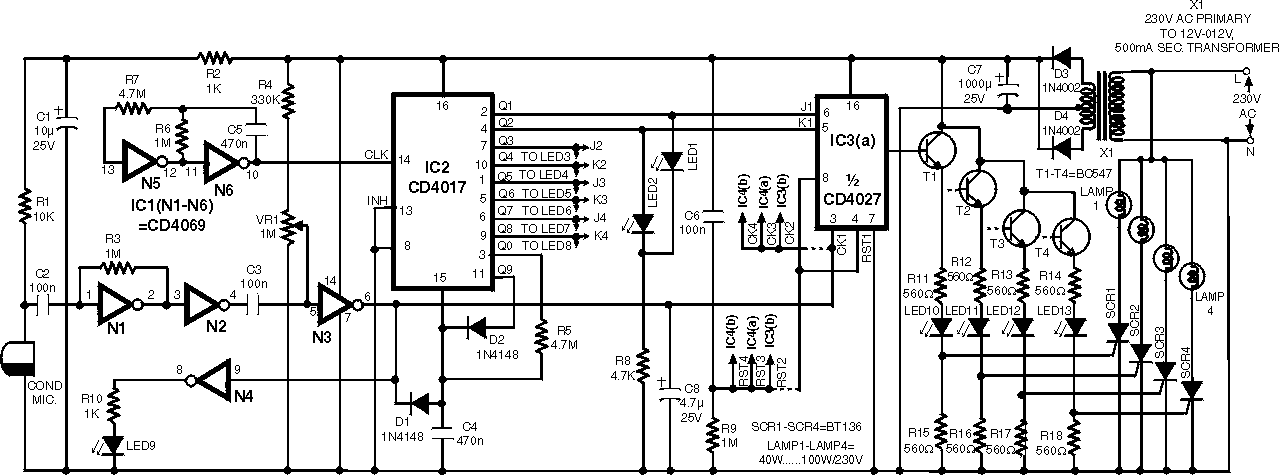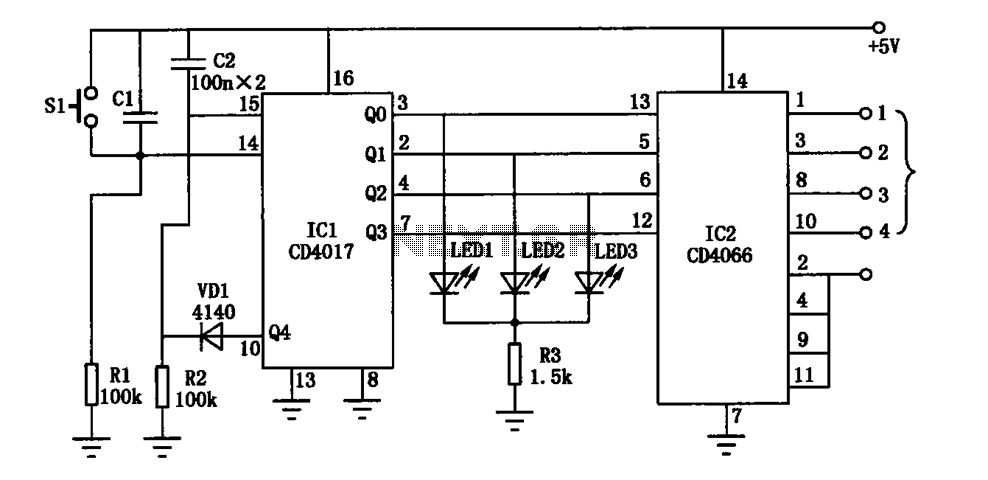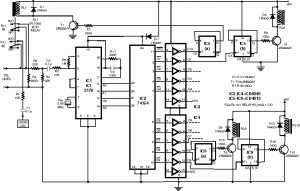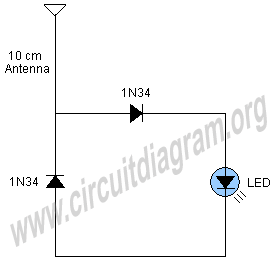
Clap Activated Remote With CD4017 IC

The disadvantage of infrared or wireless remote control is that the remote transmitter is often misplaced. This circuit design offers a way to control ...
This circuit design addresses the common issue of misplaced remote transmitters in infrared or wireless remote control systems. It introduces an innovative solution that enhances user convenience by allowing control of devices without the need for a traditional remote. The proposed circuit utilizes a combination of a microcontroller, a Bluetooth module, and a smartphone application to enable remote operation.
The microcontroller serves as the central processing unit, managing inputs from the Bluetooth module and executing commands to control various electronic devices. The Bluetooth module facilitates wireless communication between the smartphone and the microcontroller, allowing users to send control signals from their mobile devices. The smartphone application is designed with a user-friendly interface, enabling users to easily navigate and control multiple devices from a single platform.
In addition to the basic control functions, the circuit can be equipped with features such as device status feedback, allowing users to receive real-time updates on the operational status of their devices. This feedback can be implemented through LED indicators or notifications on the smartphone application. Furthermore, the circuit can be designed to operate within a specific range, ensuring that control signals are only transmitted when within proximity of the intended devices.
Overall, this circuit design not only resolves the issue of misplaced remote transmitters but also enhances the user experience by integrating modern technology into traditional remote control systems. The combination of a microcontroller, Bluetooth communication, and a smartphone application represents a significant advancement in the field of remote control technology.The disadvantage of infra-red or wireless remote control is a remote transmitter is often misplaced. This circuit design offers a way to control .. 🔗 External reference
This circuit design addresses the common issue of misplaced remote transmitters in infrared or wireless remote control systems. It introduces an innovative solution that enhances user convenience by allowing control of devices without the need for a traditional remote. The proposed circuit utilizes a combination of a microcontroller, a Bluetooth module, and a smartphone application to enable remote operation.
The microcontroller serves as the central processing unit, managing inputs from the Bluetooth module and executing commands to control various electronic devices. The Bluetooth module facilitates wireless communication between the smartphone and the microcontroller, allowing users to send control signals from their mobile devices. The smartphone application is designed with a user-friendly interface, enabling users to easily navigate and control multiple devices from a single platform.
In addition to the basic control functions, the circuit can be equipped with features such as device status feedback, allowing users to receive real-time updates on the operational status of their devices. This feedback can be implemented through LED indicators or notifications on the smartphone application. Furthermore, the circuit can be designed to operate within a specific range, ensuring that control signals are only transmitted when within proximity of the intended devices.
Overall, this circuit design not only resolves the issue of misplaced remote transmitters but also enhances the user experience by integrating modern technology into traditional remote control systems. The combination of a microcontroller, Bluetooth communication, and a smartphone application represents a significant advancement in the field of remote control technology.The disadvantage of infra-red or wireless remote control is a remote transmitter is often misplaced. This circuit design offers a way to control .. 🔗 External reference





